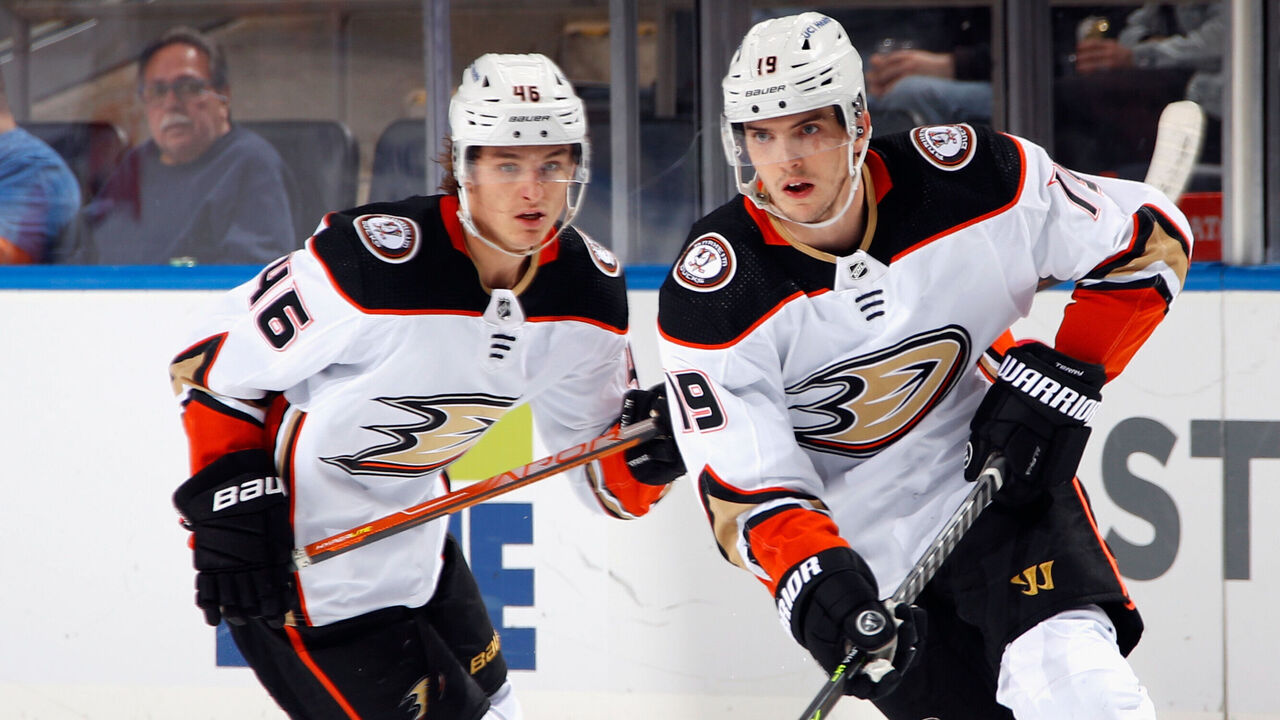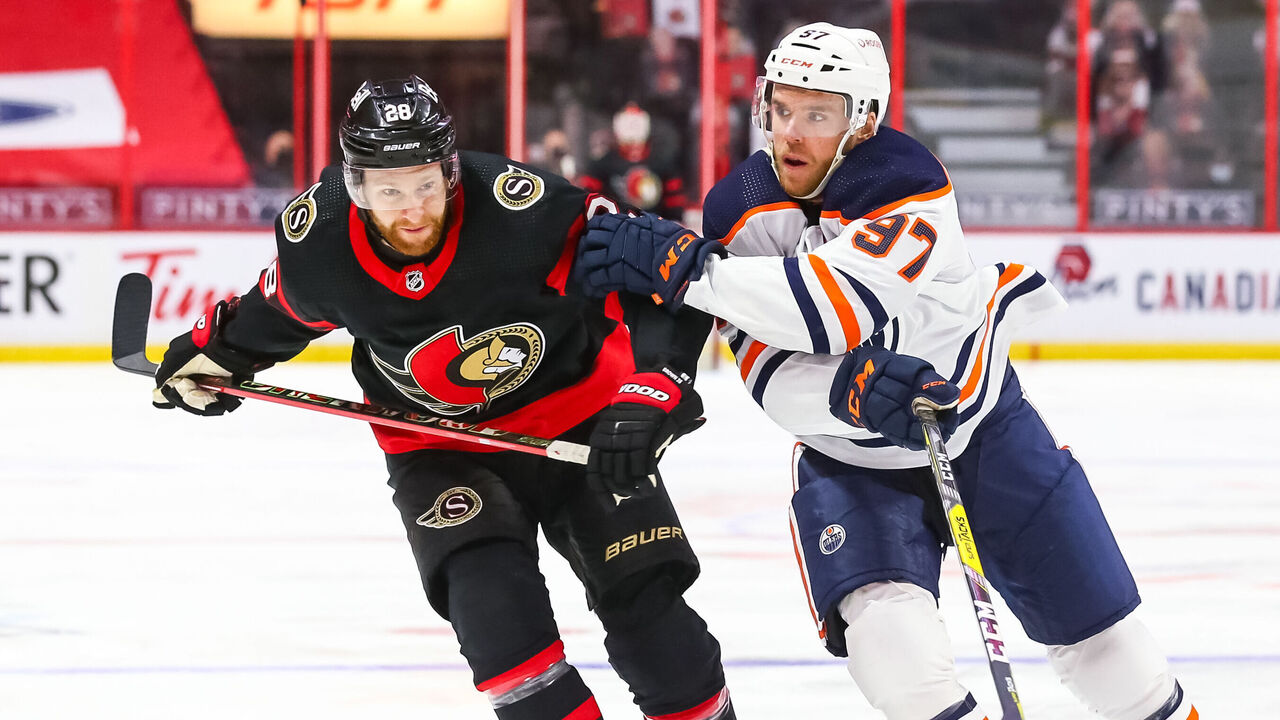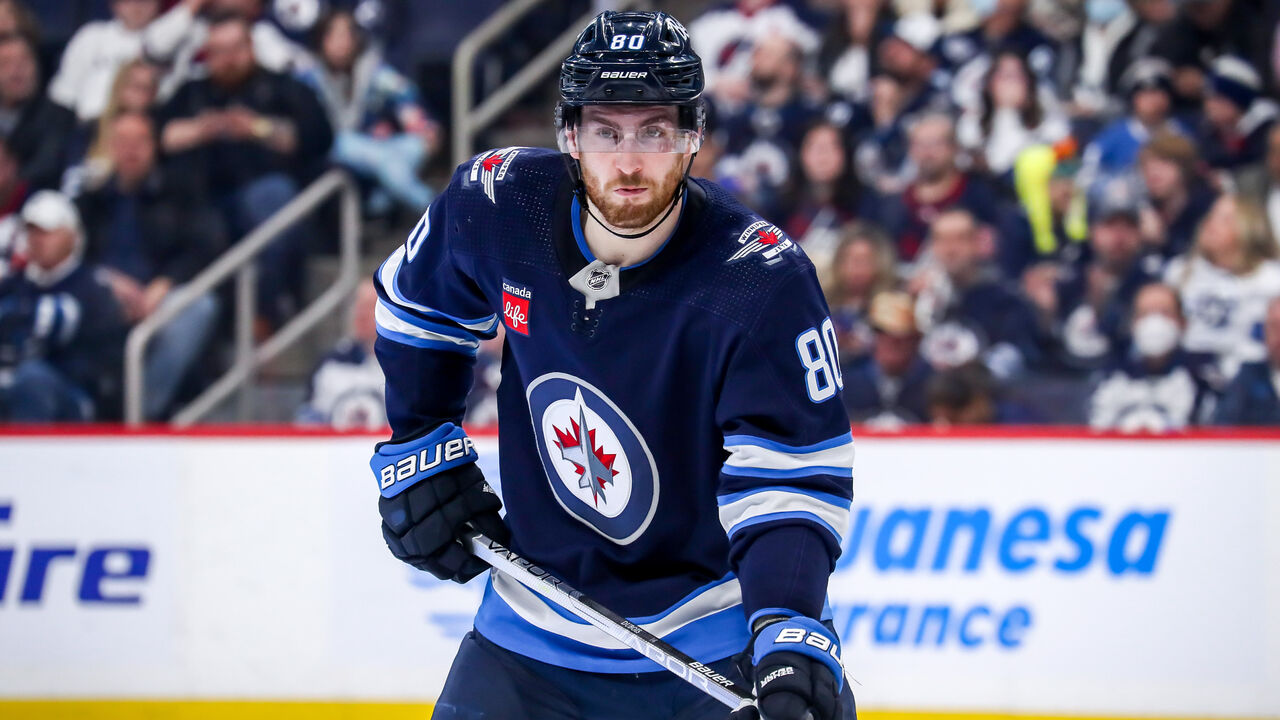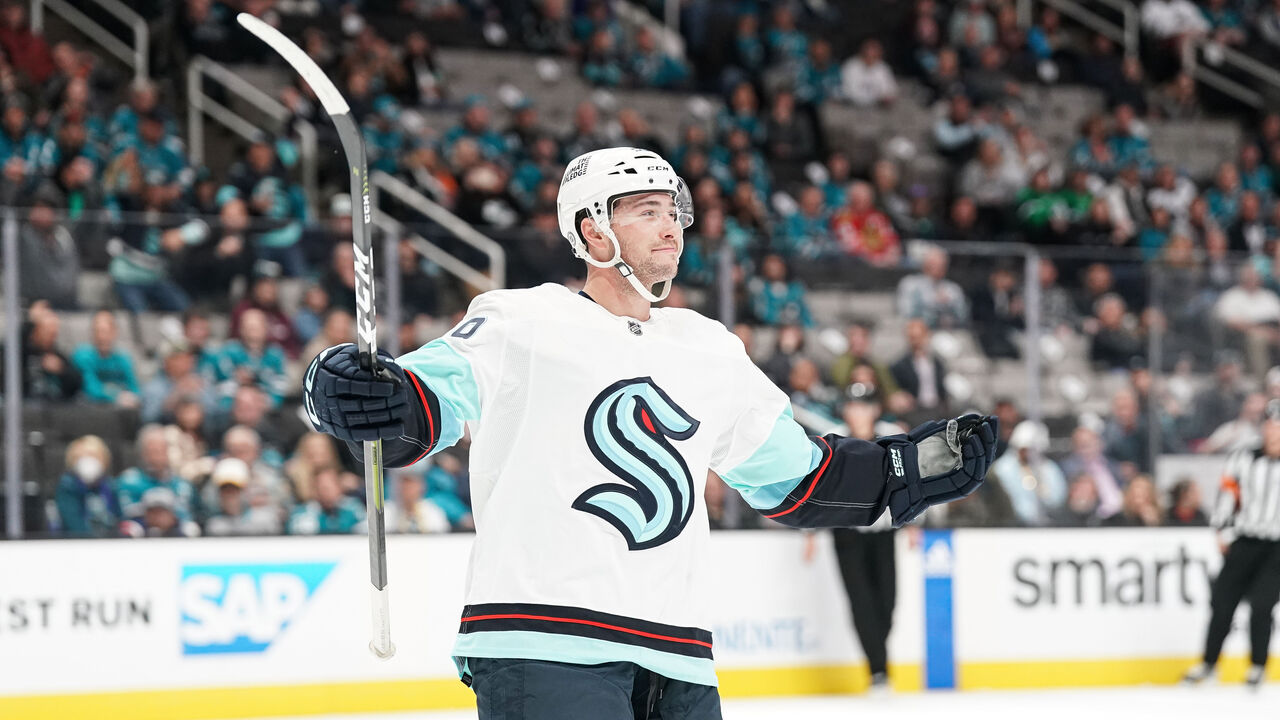NHL offseason grades: Pacific Division
Divisions: Central | Metropolitan | Atlantic
With the NHL offseason all but wrapped up, we're handing out comprehensive grades for all 32 teams. The four-part series marches on with an in-depth look at each Pacific Division club.
Some contract figures are reported. Most players on two-way deals have been omitted.
Anaheim Ducks Bruce Bennett / Getty Images Sport / GettyKey arrivalsKey departuresRe-signedUnsignedRookies who could crack the lineup
Bruce Bennett / Getty Images Sport / GettyKey arrivalsKey departuresRe-signedUnsignedRookies who could crack the lineupThe Ducks' offseason isn't done until they give Zegras and Drysdale new deals, but Anaheim got one part of its long-term future locked in by signing Terry to a seven-year, $49-million extension. The 25-year-old is one year removed from a 37-goal season and, while didn't reach those same heights in 2022-23, he did post his second-straight 60-point campaign. Couple his offensive potential with the rising cap, and Terry's pact can look like a steal in the coming years. The immediate question is how his deal will impact Zegras'. The latter is three years younger, led the Ducks in points last season, and can play center - not to mention the fact that he's the current face of the franchise.
But enough about the youth movement. GM Pat Verbeek lured in a couple of established players in Killorn and Gudas, who, in all likelihood, will be more useful to the Ducks than veterans they've brought in in the past. Gudas adds a bone-crushing physicality to Anaheim's blue line, while Killorn injects some Stanley Cup pedigree. Sure, four years for an almost 34-year-old Killorn isn't ideal, but his leadership and experience can prove invaluable to a young squad, and he led this crop of UFAs with 64 points.
There's also the question of whether the Ducks will part ways with goalie John Gibson. As of now, Anaheim is rolling with Gibson, Stalock, and Dostal in the crease. Dostal, the promising 23-year-old, seems ready to make the leap to full-time NHL action, but picking up Stalock - who was respectable on the struggling Chicago Blackhawks in 2022-23 - gives the team a little insurance.
Trying to put it all together is new head coach Greg Cronin, who is a first-time NHL bench boss at age 60. Anaheim will likely make improvements this season, but the playoffs are still a long way out.
Grade: BCalgary Flames Derek Leung / Getty Images Sport / GettyKey arrivalsKey departuresRookies who could crack the lineup
Derek Leung / Getty Images Sport / GettyKey arrivalsKey departuresRookies who could crack the lineupThe Flames' offseason strategy probably features GM Craig Conroy repeating this phrase into the mirror daily: "Please, please, please let Jonathan Huberdeau and Jacob Markstrom be better next season."
It isn't like Calgary has the cap space to add too much of consequence, anyway, at least not without moving money out - like the Toffoli trade that brought Sharangovich into the mix. Many thought that swap would be the first domino to fall for the Flames, but Noah Hanifin, Elias Lindholm, and Mikael Backlund - who all have one year remaining on their current pacts and don't appear to be keen on signing extensions - have yet to be moved.
For that reason, Calgary's offseason doesn't feel complete, but we can only grade what's happened so far. The Flames' biggest move might have been firing hard-nosed head coach Darryl Sutter, who didn't appear to be vibing with the players - Huberdeau chief among them - after winning the Pacific Division in 2021-22. Taking over is newbie Ryan Huska, who spent the previous five seasons as an assistant with the club.
The Flames didn't have a single player averaging over one point per game last season and just dealt their leading scorer in Toffoli. Barring any additional moves, Calgary has to hope that a coaching change will provide enough of a shock to the system to get things back on track.
Grade: D+Edmonton Oilers Chris Tanouye / Getty Images Sport / GettyKey arrivalsKey departuresRe-signedRookies who could crack the lineup
Chris Tanouye / Getty Images Sport / GettyKey arrivalsKey departuresRe-signedRookies who could crack the lineupThe 2023-24 Oilers won't look much different from last season, and that's OK: Connor McDavid and Leon Draisaitl are firmly in their primes, while the club can only benefit from Mattias Ekholm's first full season on the back end.
Edmonton's biggest addition was Brown, McDavid's teammate for two seasons in the OHL. Their connection worked out well for the Erie Otters, with the pair combining for 227 points as linemates in 2013-14. With those numbers, it's no wonder McDavid lauded Brown as the "perfect addition" to the Oilers. If Edmonton opts to reunite the duo on the top line, Brown has an excellent chance to rebound from the 2022-23 campaign, when he was limited to just four games due to an ACL injury. GM Ken Holland also pulled off some cap manoeuvres with the signing: Brown carries a cap hit of $775,000, but he can make an additional $3.225 million in performance bonuses. If Edmonton exceeds the ceiling due to those bonuses, the overage won't count against the cap until 2024-25. Just kick that can down the road.
Speaking of the cap, the Oilers sacrificed Kostin and Yamamoto for a little wiggle room. Some of that went to retaining rising star defenseman Bouchard on a bridge deal. Getting him to put pen to paper was a must: Bouchard flourished once his role increased down the stretch last year and he proved vital to the power play after joining the top unit in February.
Edmonton's biggest question is its goaltending, with Holland running back the tandem of Jack Campbell and Stuart Skinner. The former improved as the 2022-23 season progressed, while the latter impressed as a rookie. If they implode, though, the Oilers do have a knack for outscoring their problems.
Grade: BLos Angeles Kings Darcy Finley / National Hockey League / GettyKey arrivalsKey departuresRe-signedRookies who could crack the lineup
Darcy Finley / National Hockey League / GettyKey arrivalsKey departuresRe-signedRookies who could crack the lineupJust like in 2021-22, the Kings finished in third place in the Pacific Division before getting taken down by the Oilers in the first round of the playoffs. Acquiring Dubois from the Winnipeg Jets in a sign-and-trade helps Los Angeles' chances of avoiding that fate for a third consecutive campaign.
The Kings have to hope that the third team is the charm for Dubois, but injecting the seemingly reenergized and motivated 6-foot-4 pivot into a center group that already includes Kopitar and Phillip Danault gives them a deadly one-two-three punch on paper. If this exercise only graded a team's look down the middle, the Kings would get an A+.
As much as Dubois' presence can aid L.A.'s dream of seeing the second round, its situation in the crease arguably hinders it. Sure, Talbot and Rittich came to the West Coast on a pair of cheap deals, but they're joining a platoon that features ... Pheonix Copley. Are you filled with confidence? Probably not.
On the back end, the Kings will look a little different after shipping out Walker and Durzi, but those moves only open the door for the promising Clarke to step in. Finally, Los Angeles handed Kopitar a two-year, $14-million extension beginning in 2024-25. That's a hefty chunk of change for a player who will be 38 once it expires (it certainly isn't as team-friendly as the one-year, $2.5-million pact Patrice Bergeron signed last summer) but it's well-deserved for the responsible two-way forward just the same.
Grade: B-San Jose Sharks Icon Sportswire / Icon Sportswire / GettyKey arrivalsKey departuresRe-signedRookies who could crack the lineup
Icon Sportswire / Icon Sportswire / GettyKey arrivalsKey departuresRe-signedRookies who could crack the lineupLike a particularly daunting final exam, the Karlsson trade is going to make up the bulk of San Jose's offseason grade - and the Sharks didn't ace it.
We would've liked to see GM Mike Grier get ... more for the reigning Norris Trophy winner beyond a pair of aging forwards who are declining in efficacy in Granlund and Hoffman (at full price), defenseman Rutta, and Pittsburgh's 2024 first-rounder (top-10 protected). Understandably, Grier didn't want to retain an ample portion of Karlsson's $11.5-million cap hit for the next four seasons, and he accomplished that goal by only taking on 13%. But the return package likely would have improved if he was willing to take on a little more. At the end of the day, losing Karlsson makes the team far, far worse, which is good news for the Sharks' tanking mission, but bad news for people who want watchable hockey in San Jose.
Elsewhere in the lineup, we have to applaud the Zadina and Duclair additions. Zadina couldn't put the pieces together in Detroit, and taking a flyer on the 2018 sixth overall pick to the tune of $1.1 million is a savvy, low-risk, high-reward signing for the Sharks. Duclair is one year removed from a 30-goal season and can make the most of an increased role in San Jose, thus making him an attractive trade chip in a few months' time.
In the crease, Blackwood's cap hit might seem a bit steep given his struggles and recent run of injuries, but the Sharks only needed to give up a sixth-round pick to acquire his rights.
Grade: C-Seattle Kraken Kavin Mistry / National Hockey League / GettyKey arrivalsKey departuresRe-signedRookies who could crack the lineup
Kavin Mistry / National Hockey League / GettyKey arrivalsKey departuresRe-signedRookies who could crack the lineupThe Kraken are the Western Conference's most-improved club after rebounding from an abysmal inaugural season. Consider us not shocked that Seattle opted to stay the course (including new deals for GM Ron Francis and head coach Dave Hakstol), enjoying a quiet summer that kept the team's chemistry largely intact.
The crown jewel of the Kraken's offseason was signing the 26-year-old Dunn to a four-year, $29.4-million extension, rewarding the cornerstone of their blue line after a breakout season that saw him post a career-high 64 points in 81 games while leading the team in average ice time (23:40). Borgen and Fleury join Dunn as rearguard returnees while Dumoulin replaces Soucy. Francis revealed that he only wanted to sign Soucy or his replacement to a two-year deal so they wouldn't block top prospect Evans' progress. Mission accomplished.
The larger changes in Seattle came in goal and up front. The Kraken lost Jones, who started the lion's share of the games last season, so the pressure is on Philipp Grubauer to stay healthy. Free agency took a bite out of the Seattle's fourth line, with Donato, Geekie, and Sprong all signing elsewhere on $2-million cap hits. The Kraken brought in Yamamoto and Bellemare to offset the loss while saving some cash.
All eyes will be on 2022 fourth-overall pick Wright to see if he can convincingly claim one of those bottom-six forward spots after struggling in 2022-23. Also vying for a spot is Kartye, who impressed in the playoffs.
Grade: BVancouver Canucks Derek Cain / Getty Images Sport / GettyKey arrivals Key departures Re-signedRookies who could crack the lineup
Derek Cain / Getty Images Sport / GettyKey arrivals Key departures Re-signedRookies who could crack the lineupThese moves certainly don't have us penciling Vancouver into the playoff picture, but the Canucks were smart and responsible with their signings this summer and they've earned some props.
The Canucks cleaned up their blue line, and buying out the final four years of Ekman-Larsson's contract was just the cost of doing so. He'll be on their books until 2031, but Vancouver will save a combined $12 million over the next two years. Entering the mix in his stead is veteran Cole and stay-at-home rearguard Soucy, who join Filip Hronek (acquired in March) as the newest members of the Canucks' defense. At 34 years old, Vancouver was wise to sign Cole to a one-year pact. Soucy, 29, inked a three-year, $9.75-million deal, which shouldn't raise too many eyebrows: Justin Holl (three years, $10.2 million), Gudas (three years, $12 million), and Connor Clifton (three years, $10 million) all signed for more on July 1.
In addition to Soucy and Cole, Blueger's acquisition will also do well to fix the Canucks' penalty kill, which can use all the help it can get after finishing dead last in the league in 2022-23. Suter caps off the new notable additions and could slide in as the Canucks' third-line center on a tight $1.6-million cap hit for the next two seasons. Vancouver was hurting for forward depth, so that was an astute addition in our books.
To truly make Vancouver's offseason a home run, we would have liked to see an extension for Elias Pettersson, who can become a restricted free agent next summer, but it appears those talks have been tabled.
Grade: B+Vegas Golden Knights Ethan Miller / Getty Images Sport / GettyKey departuresRe-signedRookies who could crack the lineup
Ethan Miller / Getty Images Sport / GettyKey departuresRe-signedRookies who could crack the lineupAfter winning the Stanley Cup for the first time in franchise history, Vegas' summer motto came through loud and incredibly clear: If it ain't broke, don't fix it. Keeping the band together is a tonal shift from an organization that's more known for its aggressive roster-building than its loyalty, but the strategy makes sense.
Instead of injecting any new, substantial talent into their roster, the Golden Knights re-signed Hill and Barbashev - their biggest free agents - rewarding them for their integral roles in Sin City's championship run. Original Golden Knight Reilly Smith was a victim of those signings, though, as he was traded to the Pittsburgh Penguins in exchange for a third-rounder to clear cap space.
Barbashev's pact may raise some eyebrows seeing as he's only hit the 60-point mark once in his career, but he built up incredible chemistry with Jack Eichel and Jonathan Marchessault and was a beast in the playoffs, amassing 18 points while ranking second on the team with 64 hits in 22 games.
Hill's deal may be a bit of an overpay for a goalie who has never started more than 25 games in a single regular season, but he was downright heroic in the playoffs. Even if Hill can't replicate that performance, Vegas only signed him for two years, so they aren't locked into long-term trouble. Waiting in the wings if Hill can't hack it is Logan Thompson, who was outstanding in his rookie season when he was healthy. Unlike last summer, Vegas enters the new season with a clear-cut tandem. Score one for consistency.
Grade: A-Copyright (C) 2023 Score Media Ventures Inc. All rights reserved. Certain content reproduced under license.